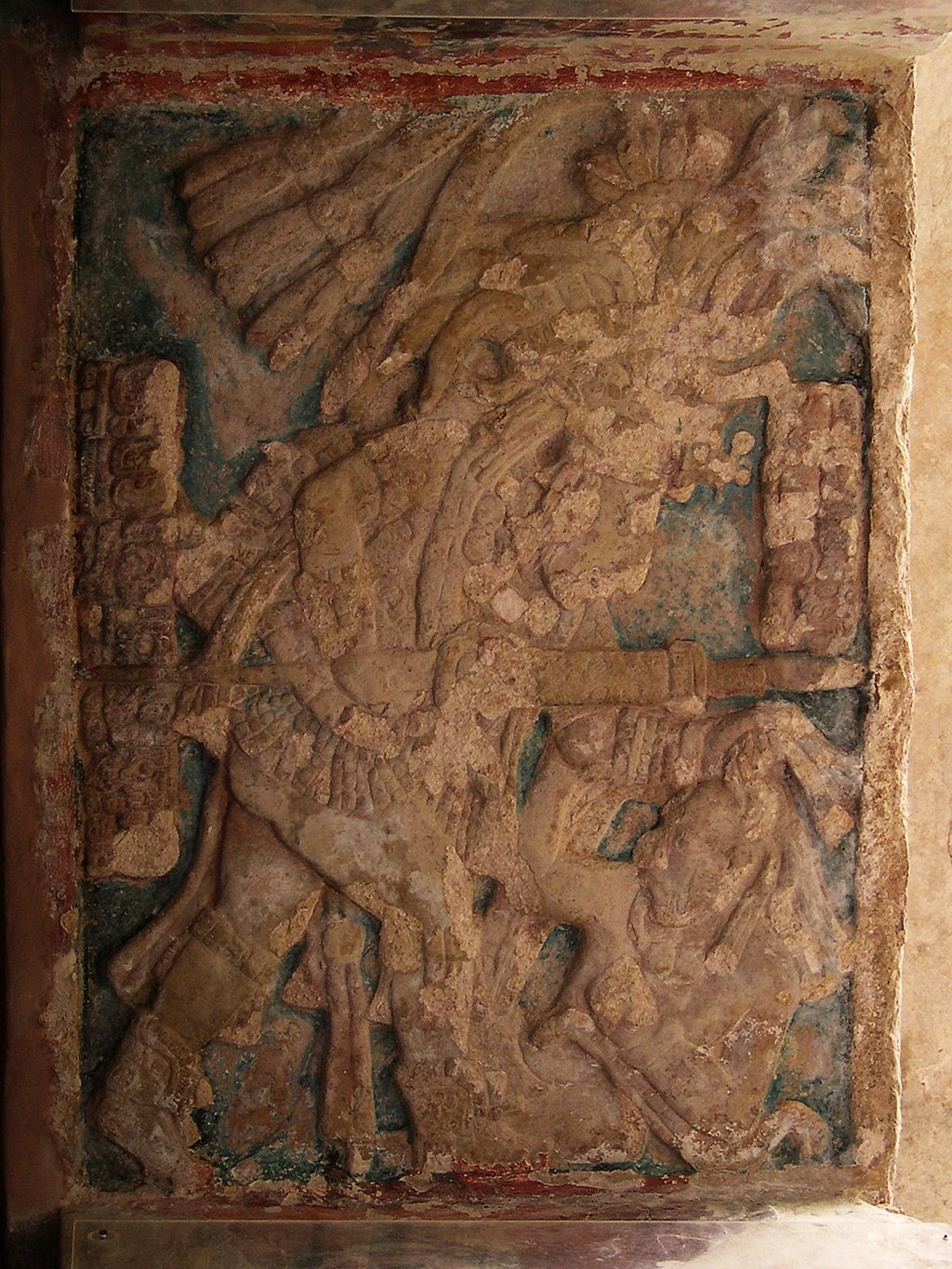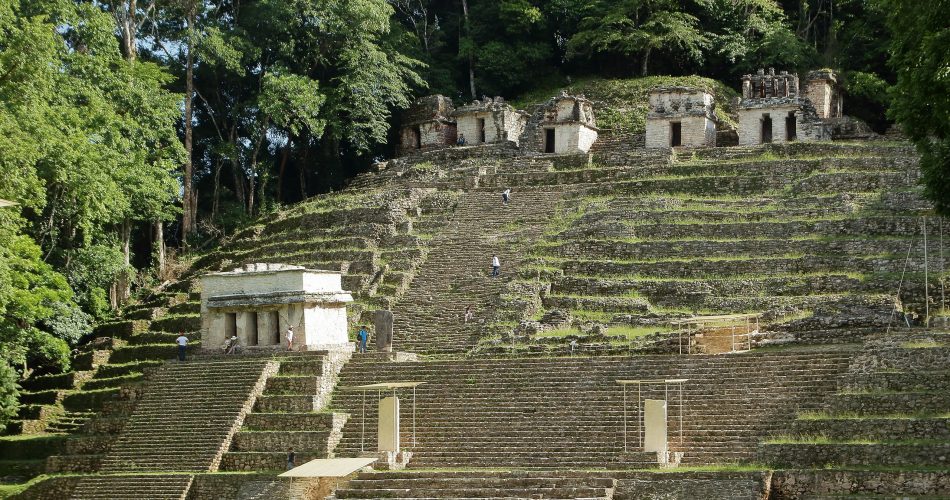Hidden deep in the Lacandon Jungle lies Bonampak, an ancient Maya city rich with history and culture. Located in the state of Chiapas, Mexico, Bonampak is well-known for its stunning murals and impressive structures, each telling the story of a vibrant civilization that thrived centuries ago. During my years living in Mexico, I lived not far from Bonampak. I spent several years living in the city of Villahermosa, in Tabasco, which also has its own unique history and treasures.
Now, back to this beautiful ancient city in Chiapas. Beyond the famous murals, Bonampak has a hidden treasure—its pyramid temple. In this article, we’ll explore these fascinating structures, their cultural significance, and how they reveal the architectural genius of the Maya people.
The Forgotten Legacy of Bonampak’s monuments
The name “Bonampak” means “painted walls” in the Yucatec Maya language, referring to the remarkable murals that have amazed visitors for decades. Yet, Bonampak also features an impressive pyramid temple complex that is often overlooked but offers valuable insight into the ceremonial and political life of the ancient Maya.
At the center of Bonampak is the Great Plaza, a wide-open space surrounded by imposing structures that once served as places for ceremonies and religious gatherings. One of these structures is the Acropolis—a group of connected buildings on top of a prominent platform, resembling a stepped pyramid. However, the Acropolis was more than an architectural marvel; it was a place of great cultural importance. It functioned both as a stage for public ceremonies and as the residence of the ruling elite, highlighting the connection between power and religion in Maya society.
The Architectural Importance of Bonampak’s monuments
The pyramid temple of Bonampak symbolizes the deep connection between the Maya and their spiritual beliefs. Like many Maya pyramids, these structures were designed to represent sacred mountains, acting as a bridge between the earth and the gods. The stepped pyramid structure also reflects the tiers of the Maya underworld, giving physical form to their complex worldview.
Bonampak’s pyramid temple ais clear evidence of the engineering brilliance of the Maya. Constructed from limestone, the monuments feature detailed carvings and reliefs that tell the stories of Bonampak’s rulers and their victories. More importantly, and as many other ancient structures throughout the Maya world, these structures also served as astronomical observatories, aligning with celestial events and providing ceremonial platforms for important occasions such as solstices and equinoxes.
The Murals and Their Connection to the monuments
Bonampak’s murals, located within Structure 1 atop a pyramid platform, are among the most well-preserved in the Maya world. They depict vivid scenes of royal ceremonies, battles, and rituals. But what many visitors may not realize is how significant the pyramid is to these murals. The temple at the top wasn’t just a decorative element; it was a sacred space where these events took place, adding authenticity and depth to the murals’ scenes.
The murals and the pyramid structures together provide a window into the ceremonial life of Bonampak. They reveal the influence of the city’s rulers and the impressive structures that showcased their status. The elevated pyramid platform served as a visual representation of the rulers’ connection to the divine, reinforcing their claim to leadership.

A Lintel at Bonampak. Wikimedia Commons.
Bonampak’s Pyramid in the Larger Maya World
To truly appreciate Bonampak’s pyramid temple, it’s important to see them in the context of the larger Maya world. Cities like Tikal, Palenque, and Yaxchilán (which is near Bonampak) all feature grand pyramids that played important ceremonial and administrative roles.
Bonampak, although smaller, follows the same tradition, using height and visibility to display power. The pyramid complex at Bonampak was where rituals took place, where rulers showcased their dominance, and where people gathered for significant events.
The pyramid temple also highlights Bonampak’s connection to larger Maya cities. Many believe Bonampak was closely linked to the more powerful city of Yaxchilán, and you can see this influence in the architectural style of Bonampak’s monuments. The similarities in the carvings and the layout of ceremonial spaces reflect Yaxchilán’s grandeur, indicating that Bonampak looked to its larger neighbor for inspiration and influence.
Visiting Bonampak Today
Visiting Bonampak today is like stepping into the past, offering an experience that’s both unique and unforgettable. Unlike many popular tourist spots, Bonampak remains relatively untouched, giving you a real sense of discovery. The journey to get there is an adventure, taking you through the thick, lush Lacandon Jungle, where the whispers of ancient rituals seem to linger among the trees. When you arrive, standing in the Great Plaza surrounded by the pyramid temple, it’s easy to picture what life might have been like when the city was at its peak.
The pyramid temple of Bonampak might not reach the heights of Tikal or display the intricate detail of Palenque, but they have a character all their own. They offer a window into the political and ceremonial life of the Maya, showing us how this smaller city played its part in a vast, interconnected world. For anyone fascinated by ancient civilizations, Bonampak is a place where history feels alive—a place where art, culture, and architecture come together to tell the story of the Maya’s enduring legacy. Then again, I have that feeling whenever I visit any such city. So it might be just me.
The Importance of Bonampak’s Monuments
Nevertheless, the pyramids at Bonampak are proof that every Maya city, no matter its size, had a role in the rich history of Mesoamerica.
The structures here are monuments to the creativity, stability, and spirituality of the Maya people. They weren’t just buildings—they were sacred places, observatories, and symbols of power.
While Bonampak is best known for its murals, its pyramid temple is equally significant. They provide context to the stories told in the murals and offer a glimpse into the lives of the people who built them. As we explore places like Bonampak, we gain a greater appreciation for the beauty and complexity of Maya civilization—and for the pyramid that continues to stand as silent witness to their achievements.
How can I best describe this ancient site? Well, Bonampak is a hidden gem of Maya archaeology. It offers a window into a past filled with artistry, spirituality, and impressive architecture. The monuments of Bonampak, though often overshadowed by its murals, are essential to understanding the city’s history and cultural significance. For those intrigued by ancient civilizations and the pyramids they built, Bonampak stands as a testament to the enduring legacy of the Maya and their incredible accomplishments.

